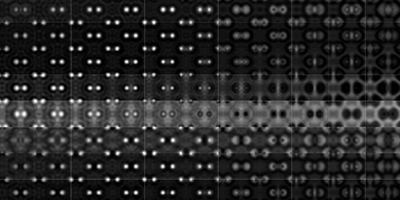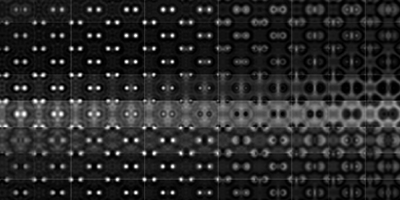Atoms Snap into Focus
By measuring how a beam of electrons is transmitted through a thin sample, modern transmission electron microscopes (TEMs) can acquire images with a resolution of about picometers, sufficient to image individual atoms. When passing through the sample, electrons can lose an amount of energy that is characteristic of the specific element with which they interact. Energy-filtered TEM (EFTEM) analyzes the energies of such transmitted electrons to obtain chemical maps of the specimen. Unfortunately, EFTEM techniques have not yet been able to achieve atomic resolution as their resolving power is limited by imperfections in the electron lenses, called chromatic aberrations, which cause electrons with different energies to be focused on different planes.
Writing in Physical Review Letters, Knut Urban at the Forschungszentrum Jülich, Germany, and an international team of scientists have now shown how atomic resolution can be recovered in EFTEM. The authors employed newly developed achromatic electron optics and carried out a benchmark test, imaging a single crystal of silicon and selectively acquiring only those electrons that interacted with specific core-shell electrons of silicon. The achieved resolution was sufficient to visualize so-called silicon “dumbbells”: neighboring silicon atoms that pair up in certain planes of the crystal. The images showed that the centers of two atoms in a dumbbell are separated by only angstroms. The scheme should allow unambiguous identification of the chemical nature of individual atoms in a sample containing multiple elements. – Matteo Rini





